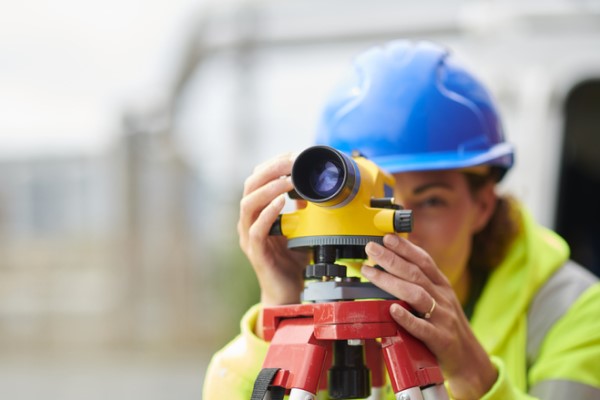Cementing the role of women in construction

The demand for highly skilled construction labour, particularly those who are savvy and comfortable with technology, continues to grow. And women are stepping in, not only to fill gaps at every level but to bring their own unique, profit-boosting perspectives and skills in the process. According to a McKinsey & Co. report, gender-diverse companies are 25% more likely to reach above-average profitability compared to less diverse companies
Despite these truths, women in Australia still only make up 12% of the construction workforce and in STEM education, women comprise only 21% of engineering majors. In 2023, only 28% of all STEM-related jobs were held by women.
The untapped potential of women in the construction industry is clear. However, for the sector to continue to evolve and attract more women, change needs to occur at every level, from the onset of education right up to the executive decision-maker level.
Education level
In the classroom, there are still misconceptions, built on outdated stereotypes, that ‘girls are not good at math, or that the ‘engineering and construction sectors are for men, not women.’ A study by Microsoft reveals that young girls become interested in STEM subjects around the age of 11 and then quickly lose interest when they turn 15.
Conformity to social expectations, gender stereotypes, and lack of representation across the industry continue to channel career choices for girls away from STEM fields. Currently, a ChatGPT search of a ‘construction worker’ will only generate an image of a man, which speaks volumes to how this sector is understood within popular culture. Without that representation, it is not surprising that girls lose interest in the industry at 15.
Mentorship programs could help to encourage young women to consider joining the industry but work to unpick stereotypes that are enforced inside and outside of the classroom will also be crucial for changing the current status quo.
Site level
For the 12% of woman that do enter the construction workforce, there could be additional challenges and barriers that further solidify the male-dominance of the sector.
Construction worksites are not typically designed for women – there are a lack of sanitary facilities which can be challenging on some sites. Temporary facilities on worksites are usually unisex, and often not very well maintained or overused. As a result, women report facing issues like the lack of appropriate facilities available to them, and a major issue is feminine hygiene at construction worksites. With limited female representation, there has been a limited drive for companies to provide equitable sanitary facilities.
It would be naive to think that updating the toilet facilities alone would have a direct impact on women entering the construction industry, however, eliminating the need for women to be called out as different and being prepared to accommodate female workers at site level could contribute to bigger cultural changes sector-wide. Whether that is rooms for pumping or menstrual product availability – women should feel the site is a safe place for them without having to advocate for their needs.
Executive level
In Australia women remain under-represented in all key decision-making roles across almost all industries, with women comprising only 22.3% of CEOs, 35.1% of key management positions, 34% of board members, and 18% of board chairs.
While strides have been made within the construction industry to become more diverse, women are still severely underrepresented in leadership and project supervisory roles despite this progress.
And representation truly does matter – seeing other women in construction leadership roles will change existing perceptions.
However, senior roles in construction require a significant amount of face time and travelling for extended periods of time. Families can find this difficult to manage and many women feel that they have to take a step back, particularly since the pandemic. The pandemic placed an unbalanced burden on women when daycares and schools closed that the workforce in general was not prepared to support and while I don’t necessarily have a solution to offer for this broader problem – it highlights the cultural challenge women face. The presumption that care-taking falls to them, which often creates the barrier of entry to these roles to begin with. As an industry, we need to do more to provide the opportunity, flexibility and support to women and families so they stay in the sector.
Unlocking the true potential of women in the construction industry
There is an untapped potential of women in the construction industry that will bring growth for companies. In 2024 we’ve continued to see significant industry-wide skills shortages, increasing the diversity of the sector could change this.
The construction space is inherently a male-dominated one – it needs to evolve to attract women, to unlock the whole gamut of opportunities that will bring about both social and economic benefits.
However, the major issue preventing women from joining the construction industry is a wider issue beyond education, workplace changes and campaigns. It will not be an easy fix; it is deeply rooted in culture that extends beyond the construction industry.
To truly evolve to cement the role of women in the construction industry, change needs to happen across multiple levels for there to be true transformation.
This article is written by InEight vice president of product development Catie Williams. Catie is focused on digitalising the industry and being a champion for change management and business process standardisation for contractors, owners and engineers.
